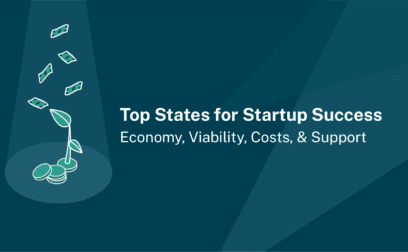TABLE OF CONTENTS
Loans from the U.S. Small Business Administration (SBA) are extremely popular for small businesses that need financing.
The SBA loan application process can be complex, but knowing what steps to take and how to apply can make it easier. Read on to find out the application process for an SBA loan, including which documents and other information you’ll need.
Page written by Kat Cox. Last reviewed on August 12, 2024. Next review due October 1, 2026.

The U.S. Small Business Administration (SBA) offers a number of loan programs for small businesses to help them accomplish many financial goals, such as funding new equipment purchases, gaining working capital to cover operational costs or creating jobs in the community. All SBA loans are guaranteed by the U.S. federal government and administered by approved SBA financial partners, including banks and credit unions, Certified Development Companies (CDCs) or community-based financial partners.
SBA loans can range in amount from under $50,000 to several million dollars, depending on the program and the purpose of the loan. SBA loans tend to have longer repayment terms and lower interest rates than other conventional loans, which makes them very popular among small businesses. However, it also makes them very competitive. In order to improve your chances of securing an SBA loan, it’s important to understand the qualifications and application process before you get started.
The SBA loan application process is somewhat different from other loan application processes. The biggest difference is that the borrower must pick a lender from certain approved SBA financial partners.
Each SBA loan program will also have specific forms that the borrower will need to fill out. The application may also require different documentation than other types of financing. To apply for an SBA loan, you’ll also need to prepare a personal statement and proof that you need the financing, which may include listing other types of financing you’ve tried to use, such as personal funds or assets.
All SBA loans require that the borrower meet certain standards, including:
Some SBA loan programs have other requirements based on what the loan will be used for.
The application process for securing an SBA loan is relatively straightforward, although it does require some work to ensure you follow the process correctly. Follow these steps to apply for an SBA loan:
The first step is to find an SBA-approved financial institution to act as your lender. The SBA keeps a list of lenders by location, so you can search on their website to find lenders near you.
Because SBA loans are administered by lenders, each lender can set its own requirements for borrowers. While you can base your lender search on your physical location, you should also find a lender whose requirements are easy for you to meet.
Many SBA-approved lenders are big banks or credit unions with whom you may already have a relationship. If you have a business bank account or personal checking account at a bank you enjoy working with, it’s a good idea to look into whether or not they offer SBA loans.
There are several different types of SBA loans. Most of them require that you use the loan for a specific purpose. Some popular SBA loans include:
In order to choose the right SBA loan for your business, you need to understand what each loan can be used for and ensure that these requirements align with your plans to use the money. It’s also important to know how much loan you can afford, meaning you shouldn’t borrow more than you really need. While SBA loans do offer good repayment terms and interest rates and are guaranteed by the government, they can still overwhelm you with debt if you can’t pay them back.
As with any loan, SBA loans require a variety of different documents as part of the application process. It’s important to make sure you know which documents are required and gather them before you start your application to save yourself time and make sure the process runs smoothly. It’s a good idea to check with your specific lender to see if they have any additional required documents, too.
You will typically be asked to provide the following documents when applying for an SBA loan:
Once you’ve gathered all the documentation, you can apply for the SBA loan through your chosen lender. They will usually have an online portal for you to log into and submit your application online. Your lender may provide you with an account representative to guide you through the process and ask any follow-up questions they may have.
Once you’ve submitted your application, it can take anywhere from a month to several months unless you apply for an SBA Express loan, which requires a response within 36 hours. You can check the status of your application with your lender through their online portal or through your account representative.
Once your application is approved, you should receive funding quickly and can use the money to push your business forward.
Get the help you need to find the right financing for your business, including which SBA loan is right for you and which lender may be your best choice. Simply sign-up, answer a few questions, and start getting information on your options today.
As a B2B finance content specialist, Kat Cox's goal is to distill complicated financial issues into useful information for small business owners, to save them time they could be using to build their companies. Her work has been featured in Forbes and on financial health platform Nav.com. When she's not writing blogs, web copy, or fiction, Kat can be found walking her dog or singing karaoke in Austin, Texas.
Swoop promise
At Swoop we want to make it easy for SMEs to understand the sometimes overwhelming world of business finance and insurance. Our goal is simple – to distill complex topics, unravel jargon, offer transparent and impartial information, and empower businesses to make smart financial decisions with confidence.
Find out more about Swoop’s editorial principles by reading our editorial policy.
Related pages
Daire made it happen! There is no doubt that Swoop sped up the process and found lenders that worked to our time scale rather than the other way round
Hocque Figureoa
Joint owner, F45 Virginia
Swoop was actually very helpful in helping us get our initial fundraising in place. Swoop was able to connect us with investors, with grant financing options and debt financing options.
Viler Lika
Founder, SingleKey
Pedja was amazing. Super supportive, understanding of our needs and wasn't pushy at all. We've been going back and forth with Swoop for over a year inquiring about different financing options and they were patient until we were ready!
Chris Skeates
F45 Multi-studio owner
Join the 95,000+ businesses just like yours getting the Swoop newsletter.
Free. No spam. Opt out whenever you like.
Kingfisher Way, Silverlink Business Park, Newcastle upon Tyne, NE28 9NX, UK
View in Google Maps35 Bull Street, Lewis Building, Birmingham B4 6AF, UK
View in Google MapsAberystwyth Innovation and Enterprise Campus
Gogerddan Campus
Aberystwyth University
Ceredigion
SY23 3EE
Dogpatch Labs, The CHQ Building, Custom House Quay, Dublin, Ireland
View in Google MapsSuite 801, Level 8, 84 Pitt Street, Sydney, NSW 2000, Australia
View in Google Maps43 W 23rd St, New York, NY 10010, United States
View in Google Maps21 Dreyer Street, Cape Town, South Africa, 7708
View in Google MapsClever finance tips and the latest news
Delivered to your inbox monthly
Join the 95,000+ businesses just like yours getting the Swoop newsletter. Free. No spam. Opt out whenever you like.




